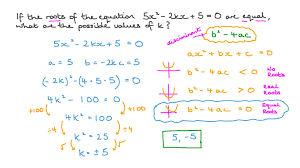Are you struggling to solve mathematical equations and determine the value of ‘b’?
Look no further! In this article, we will guide you through the process of isolating ‘b’ and finding its true value.
By exploring different equation types and providing strategies to avoid common mistakes, you will gain the confidence to tackle any mathematical problem.
Join us as we uncover the real-world applications of solving for ‘b’ and unlock the mysteries of mathematical equations.
Understanding the Role of ‘b’ in Mathematical Equations
You need to know the value of ‘b’ in order to fully understand and solve mathematical equations.
In equations of the form y = mx + b, ‘b’ represents the y-intercept, which is the point where the line crosses the y-axis. It determines the initial value of y when x is zero.
This constant term plays a crucial role in the equation, as it affects the overall shape and position of the line on the coordinate plane.
By knowing the value of ‘b’, you can accurately graph the equation and determine the specific points where the line intersects with the axes.
Additionally, ‘b’ is essential in solving linear equations, as it helps determine the relationship between the variables and provides a starting point for finding the solution.
Exploring Different Types of Equations With ‘B
There are various types of equations with ‘b’ that you can explore in order to expand your understanding of mathematical concepts.
One type of equation is the linear equation, which is in the form of y = mx + b. In this equation, ‘b’ represents the y-intercept, which is the point where the line crosses the y-axis. By determining the value of ‘b’, you can find the starting point of the line and understand how it moves in relation to the x-axis.
Another type of equation is the quadratic equation, which is in the form of ax^2 + bx + c = 0. Here, ‘b’ represents the coefficient of the linear term. By solving for ‘b’, you can find the slope of the quadratic curve and gain insights into its shape and behavior.
Exploring these different types of equations with ‘b’ will enhance your mathematical skills and broaden your understanding of algebraic concepts.
Strategies for Isolating ‘b’ and Solving Equations
Once you have identified the equation you’re working with, you can use the strategy of isolating ‘b’ to solve for its value. Isolating ‘b’ means getting it alone on one side of the equation.
One common strategy is to get rid of any other terms or variables that are in the equation. You can do this by using inverse operations. For example, if there’s a constant term added to or subtracted from ‘b’, you can use the opposite operation to remove it. If there are any terms multiplied or divided by ‘b’, you can use the inverse operation to undo it.
Once ‘b’ is isolated, you can solve for its value by performing any necessary calculations. By using this strategy, you can confidently determine the value of ‘b’ in the given equation.
Common Mistakes to Avoid When Determining the Value of ‘b
Avoid rushing through the process and assuming the value of ‘b’ without carefully analyzing the equation, for this can lead to significant errors.
When solving mathematical equations, it’s crucial to take your time and approach the problem with precision. Many individuals make the mistake of quickly jumping to conclusions without thoroughly examining the equation. This can result in incorrect values for ‘b’ and ultimately lead to inaccurate solutions.
Instead, it’s essential to carefully analyze the equation, review the given information, and apply the appropriate techniques to isolate ‘b’.
By taking a step-by-step approach and considering all aspects of the equation, you can avoid these common mistakes and accurately determine the value of ‘b’.
Real-World Applications of Solving for ‘b’ in Mathematical Equations
You can apply the process of solving for ‘b’ in mathematical equations to real-world scenarios, such as determining the rate of change in a business’s revenue over time. By using mathematical models and analyzing data, you can uncover valuable insights into how a business is performing and predict future outcomes.
For example, let’s say you have data on a company’s revenue over the past few years. By plotting this data and fitting a mathematical equation to it, you can determine the value of ‘b’, which represents the rate of change in revenue over time. This information can help businesses make informed decisions, such as adjusting their pricing strategy or identifying the factors that contribute to revenue growth.
Solving for ‘b’ in real-world scenarios allows us to understand and optimize various aspects of business operations.
Conclusion
In conclusion, determining the value of ‘b’ in mathematical equations is an important task that requires understanding its role and employing effective strategies.
By exploring different types of equations and avoiding common mistakes, one can successfully isolate ‘b’ and solve equations.
This skill has real-world applications, as it allows us to solve various problems and make accurate calculations.
So, keep practicing and honing your skills in solving for ‘b’ to excel in mathematics.


